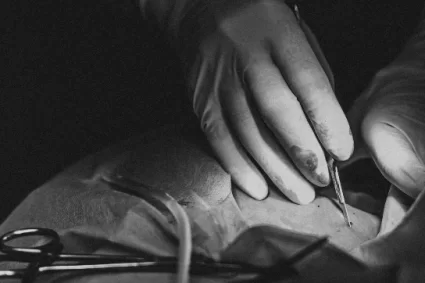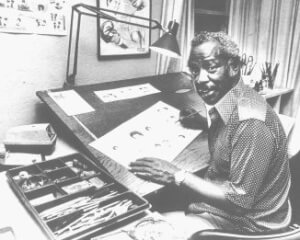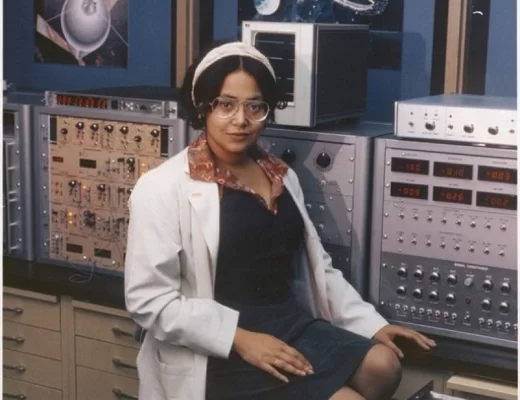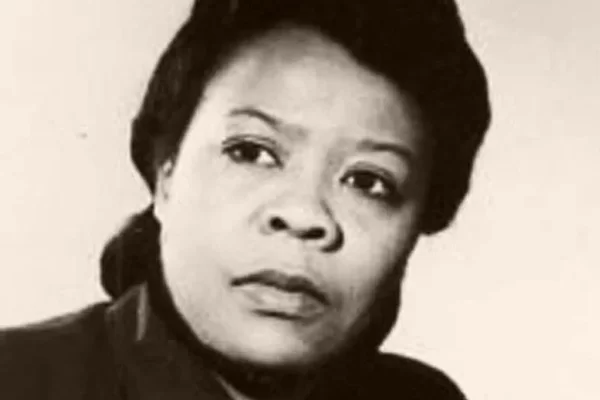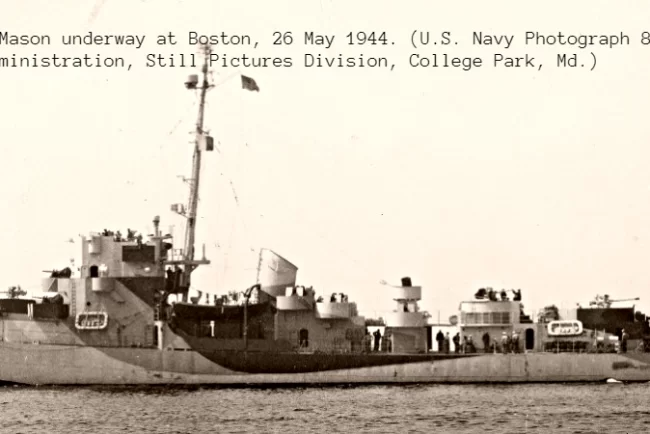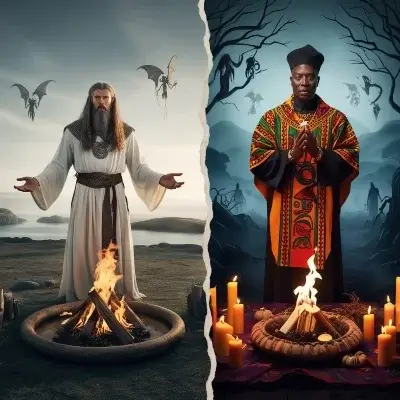Journey Through Recent Stories 🔎
Destroyer Escort: 7 Inspiring Facts About USS Mason
During World War II, the courageous sailors aboard the Navy destroyer escort USS Mason (DE-529) took on the challenge of defending their country. This historic […]
African American History EventsDuring World War II, the courageous sailors aboard the Navy destroyer escort USS Mason (DE-529) took on the challenge of defending their country. This historic ship, with a mostly African American crew of 160, sailed into the unknown, facing the crashing waves of the Atlantic and the distant rumble of enemy ships.
It wasn’t just about guarding convoys during a dangerous global war; it was about carving their place in history and battling for equality at home. But what was life like on the USS Mason, with the salty sea air, roaring winds, and tense moments of action? And how did the crew’s determination shape military history? Let’s dive into seven inspiring stories from their extraordinary journey.
1) A New Chapter Begins for the Navy Destroyer Escort USS Mason
The USS Mason (DE-529) was launched on November 17, 1943. It wasn’t just an ordinary ship—it stood for progress and change. Named after Navy pilot Newton Henry Mason, who died heroically in the Battle of the Coral Sea, the ship had 160 African American sailors aboard. This was a bold statement, breaking barriers and creating new opportunities. For the first time, these men weren’t just working behind the scenes—they were trained, combat-ready sailors, prepared to fight on the front lines of history.
2) Facing the Challenges Together
Right from the start, the crew of the USS Mason faced challenges beyond the raging seas. While the country fought enemies overseas, these sailors had to battle prejudice within their own ranks. Many doubted their abilities, assuming this diverse crew wouldn’t handle the intense pressures of war. Yet, as the salty sea spray stung their faces and the roar of the engines hummed beneath their feet, the men of the USS Mason proved everyone wrong. With sharp focus and teamwork, they performed their duties with precision and bravery, protecting vital supply ships across treacherous waters.
3) The USS Mason’s First Combat Mission
On June 14, 1944, the USS Mason commissioned as a destroyer escort embarked on its first combat mission. The crew left Charleston, South Carolina, with a single mission: to escort a convoy to Europe. The journey tested their strength and determination. As the ship cut through rough waters, the sailors remained alert, scanning the horizon for enemy threats. The sound of waves crashing against the hull became a constant companion. They safely guided their convoy to Belfast, Northern Ireland, protecting it from potential dangers. Each passing day, their steady hands and sharp eyes kept everyone on course, earning the crew the respect they had long deserved.
4) Battling Through the Storms
Later that year, the USS Mason faced one of its toughest challenges—a massive storm in the North Atlantic. The sky darkened as towering waves slammed against the ship, and the wind screamed through the rigging. The crew braced themselves, gripping the slick decks as the ship pitched and rolled. But even as the storm raged on, they didn’t just fight to keep their own ship afloat. With heroic efforts, they rescued sailors from other ships battered by the storm. Their quick thinking and fearless actions saved lives, proving once again the exceptional skill and heart of the crew.
5) Destroyer Escort Role in Hunting Submarines
On January 11, 1945, the USS Mason was patrolling off the coast of Algeria when they made radar contact with what seemed to be a German submarine. Immediately, the crew sprang into action. The sound of alarms filled the ship as sailors rushed to their stations, dropping depth charges into the cold, dark waters below. Although the submarine escaped, the crew’s rapid response showed their readiness for battle. Every decision, every action in that intense moment reminded everyone that these sailors were more than capable of defending their country and comrades.
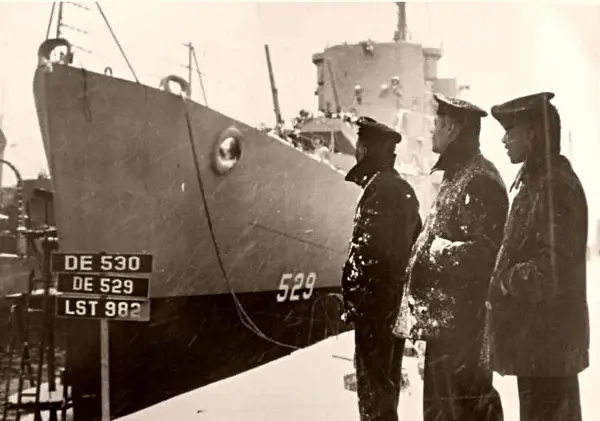
6) Paving the Way for Change
Perhaps the greatest achievement of the USS Mason during ww2 wasn’t just its successes at sea, but the doors it opened for future generations. The crew’s courage in the face of both enemy fire and racial prejudice played a critical role in the desegregation of the military. Their bravery on the seas helped pave the way for President Harry S. Truman’s 1948 decision to integrate the armed forces. In 1995, the Navy awarded commendations to the surviving crew members, shining a light on their incredible contributions during the war. The legacy of the USS Mason lives on as a powerful reminder that these men fought not only for their country but for equality.
7) Leaving a Lasting Legacy
The journey of the USS Mason is a story of courage, resilience, and breaking boundaries. Each mission, each storm, and each encounter shaped both military history and the fight for equality. The crew’s bravery didn’t just win battles overseas—it left a lasting mark on the fight for justice and equality at home. Their legacy continues to inspire us today, showing that every person’s contributions, no matter how small, can make a big difference.
Discover More in our story about African American War Veterans: 7 Ways They Changed History
Images credit of Naval History and Heritage Command
African American War Veterans | 7 Ways They Changed History
During a time when the sounds of battles filled the air, brave soldiers fought not just for their country but also for their rights. African […]
African American History EventsDuring a time when the sounds of battles filled the air, brave soldiers fought not just for their country but also for their rights. African American war veterans have played a crucial role in shaping American history, especially during these tough times. Their bravery and sacrifices have opened doors for future generations, inspiring movements for civil rights and equality.
One shining example of this impact is the remarkable story of the USS Mason, a significant part of World War II history. Let’s dive into seven inspiring ways African American veterans changed the African American story and helped the larger fight for justice.
1) The USS Mason: A Symbol of Courage
The USS Mason was a strong destroyer escort commissioned in 1944. It was one of the first naval ships mostly crewed by African American sailors. This brave ship sailed through the rough waters of the Atlantic, taking part in dangerous missions.
Despite facing discrimination, the crew of the USS Mason during WW2 showed that African Americans could serve effectively in important military roles. Their amazing achievements challenged stereotypes and proved their dedication to serving the nation.
2) The Double V Campaign: African American Veterans Lead the Charge
During World War II, African Americans started the powerful Double V Campaign. This inspiring movement called for victory against dictators overseas and against racial discrimination back home in America. The campaign pointed out the unfairness of fighting for freedom while facing oppression in their own country.
African American veterans played a key role in this movement, bringing attention to their struggles and standing up for civil rights alongside their military service.
3) Thomas W. Young: An African American Veteran’s Voice of Change
Let’s meet Thomas W. Young, an African American correspondent aboard the USS Mason. His experiences were important for showing the tough realities faced by African American soldiers. Young reported passionately on the bravery and challenges of his fellow sailors, sharing their stories in vivid detail. His writings inspired many and proved that African American voices were important in the news.
4) Breaking Racial Barriers
The brave service of African American war veterans like those aboard the USS Mason helped break down racial barriers in the military. Their hard work led to changes in policies, allowing for more integration in the armed forces. This important shift not only changed the military, but also helped civil rights efforts across the country, giving more people a chance to be heard.
5) Inspiring Future Generations
The stories of African American veterans have motivated many young people to pursue exciting careers in the military and public service. Many young men and women saw the courage and achievements of these veterans and felt inspired to stand up against injustice and fight for their rights. Importantly, the legacy of the USS Mason and the Double V Campaign continues to inspire young people today.
6) Advocating for Equality: The Role of African American War Veterans
After returning from war, many African American veterans became passionate supporters of civil rights. They shared their experiences and demanded equal treatment for everyone. Their voices became strong tools for change during the civil rights movement of the 1950s and 1960s. Their strong insistence on equality had a big impact on public attitudes and laws, showing that their fight didn’t end with the war.
7) Building a Legacy of Service
The legacy of African American veterans goes beyond their military service. They laid the foundation for future generations to keep fighting for equality and justice. Their commitment to their country and communities serves as a powerful reminder of the importance of helping others.
In conclusion, African American veterans have profoundly influenced the African American story and the larger narrative of American history. Through their bravery aboard ships like the USS Mason, their involvement in movements like the Double V Campaign, and their passionate advocacy for civil rights, they have inspired change and progress.
Explore my 7 Inspiring Facts About the Mission of USS Naval Destroyer Mason (DE529)
Halloween and African American History
When you think about Halloween and African American History, do you ever wonder about Zombies and Hoodoo or where the traditions we celebrate today come […]
Events Global African HistoryWhen you think about Halloween and African American History, do you ever wonder about Zombies and Hoodoo or where the traditions we celebrate today come from? As we carve pumpkins, wear costumes, and talk about spirits and spooky things, it’s easy to forget the long, interesting history behind this holiday.
Halloween’s origins date back to the ancient Celtic festival of Samhain, a time to honor the dead and protect the living. But what’s even more surprising is how these customs are similar to African spiritual practices, like honoring ancestors and calling on spirits. Have you ever thought about how connected these traditions might be?
Let’s dive in and explore the powerful cultural roots of Halloween.
The Chilling History of the Zombie: From Haitian Vodou to Hollywood
One of the creepiest characters in Halloween stories is the ‘zombie’—a figure many people think of as a brain-eating monster. But the real story behind zombies comes from the dark history of ‘Haitian Vodou’ and the brutal reality of slavery.
Zombies didn’t start in Hollywood; they began in the ’17th and 18th centuries’ on the sugar plantations of ‘Saint-Domingue’ (modern-day Haiti), where African slaves were forced to work under terrible conditions. Many died within a few years due to the harsh treatment.
Imagine the hopelessness the slaves must have felt, trapped in this brutal life. The zombie myth symbolized their worst fear—a future where, even in death, they would remain enslaved.
In Haitian Vodou, zombies weren’t driven by a hunger for flesh but were cursed to be slaves forever, even after death. This reflected the horrors the slaves experienced daily.
The Role of Samhain: How Celts Celebrated the Supernatural
The story of Halloween’s origins goes back over 2,000 years to the ‘festival of ‘Samhain’, celebrated by the Celts in what are now Ireland, Scotland, and Wales. Around the 1st century BCE, the Celts believed that the boundary between the living and the dead became thin during Samhain, allowing spirits to walk the earth.
To protect themselves, they lit bonfires and wore costumes to blend in with these spirits. These ancient customs later evolved into today’s trick-or-treating.
During Samhain, the Celts also practiced divination, believing that this time allowed them to communicate with spirits and see into the future. This is similar to the spiritual practices in Hoodoo and Voodoo, where people called upon spirits for guidance and protection. These ancient traditions highlight the human desire to connect with the supernatural during uncertain times.
Halloween’s African Roots: The Untold Story in African American History
When we think about Halloween and African American history, we rarely consider how deeply intertwined they are. Isn’t it strange that Halloween is viewed as an American holiday, despite its strong connections to African spiritual practices?
In many African cultures, practices like juju or muti are met with fear and skepticism. Just imagine how those societies might react to people dressed as witches and ghosts, knocking on doors for candy—it’d be quite a sight!
If Halloween’s African roots were more widely known, would we celebrate it differently? Today, it’s all about costumes, candy, and fun, but it originally involved ancestor veneration and the connection between the living and the dead.
While commercialization has buried this deeper meaning, the African roots of Halloween and its ties to African American history are still there.
Rediscovering the Cultural Roots of Halloween
In the end, the African roots of Hoodoo, Voodoo, and the zombie myth provide a deeper understanding of Halloween and African American history’s connection to the supernatural. From its origins with the Celtic Samhain festival to its evolution through African spiritual systems brought to the Americas during slavery, these elements shape our modern Halloween celebrations.
Halloween is much more than spooky fun. While many of these connections have been forgotten or commercialized, they remain an essential part of the holiday’s deep and tangled history.

